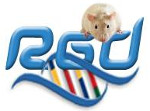GENE - CHEMICAL INTERACTIONS REPORT
Note: Use of the qualifier "multiple interactions" designates that the annotated interaction
is comprised of a complex set of reactions and/or regulatory events, possibly involving
additional chemicals and/or gene products.
|
|||||||||||||||||||||||||||||||||||||||||||||||||||||||||||||||||||||||||||||||||||||||||||||||||
|
|









